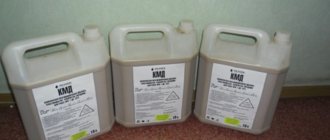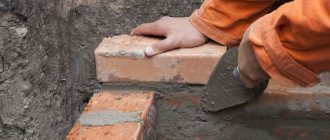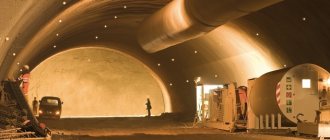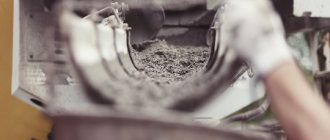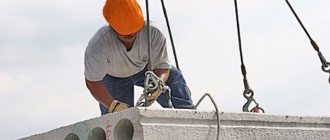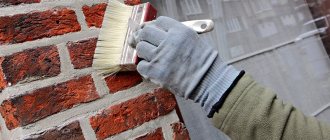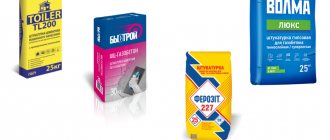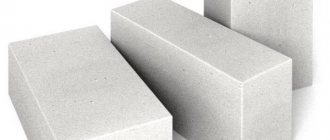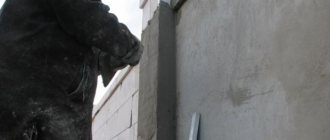Hydrophobization of facades includes a set of measures that ensure reliable protection of building materials from moisture. The need for this process is due to the porous structure of brick, concrete, foam block, gas block, and wood. Any material used in the construction of walls and ceilings has its own service life. Hydrophobization allows you to significantly extend it, improving characteristics such as strength and moisture resistance.
Hydrophobization of facades
There are two types of hydrophobization: volumetric and surface. The first is carried out during the production of building materials, but does not always provide the necessary degree of protection. Surface hydrophobization is the process of applying a special solution to the facade of a building and other materials.
Which façade needs hydrophobization?
The facade is in contact with the environment every second, which has a detrimental effect on it. Modern developments in the field of protection of building materials make it possible to minimize the influence of moisture and ultraviolet radiation. When constructing new houses, this opportunity is taken into account and implemented. But in addition to new buildings, there are a huge number of buildings that have been in use for a long time.
Facade that requires hydrophobization
Hydrophobization is a relatively new concept that not every owner of a private home knows about. Therefore, it is important to familiarize yourself with the list of signs, the presence of which will help you understand whether the structure needs additional protection.
Sign No. 1. Presence of efflorescence
Due to the porous structure, molecules of water and various salts that make up its composition circulate inside any building material. This is an inevitable process due to the nature of substances. At a positive ambient temperature, water molecules rush to the surface of the facade and evaporate (evaporation process). The salts associated with them remain on the material in the form of a whitish precipitate. These are efflorescences.
The presence of efflorescence negatively affects the durability of the house
They are formed all year round, since salt solutions do not freeze. But during the cold period of the year, the intensity of efflorescence noticeably decreases. In winter, the evaporation process is slowed down, and salts crystallize inside the material, destroying its structure. As a result, the estimated service life of the facade is reduced.
Efflorescence on brickwork
Sign No. 2. Presence of wet and muddy spots
Foam concrete and aerated concrete are classified as highly hygroscopic materials. Drops of water and spots of dampness can often be seen on the surface of these building stones. Dirt and dust circulating in the air settle on the damp surface of the facade, significantly reducing its aesthetic appeal. This applies not only to foam and aerated concrete, but also to brick, concrete, natural or artificial stone.
Damp spot on the wall
The climate of the region is of great importance. If air humidity is increased, the process of destruction of materials is more intense. Therefore, for areas with a maritime climate, the construction of buildings from porous and hygroscopic materials is not recommended.
Sign 3. Presence of fungus and mold
The presence of pathogenic microflora indicates an increased level of moisture in the building material with all the ensuing consequences: destruction and premature aging.
Mold on the facade
Sign 4. Drops of water protruding on the surface of the facade
Considering the above, we can conclude that it is reasonable to take care in advance to protect the facade and prevent the appearance of signs of erosion and other negative processes. For this purpose, a complex of chemical and organic based products has been developed. And the process of applying them is called “hydrophobization”. There is no doubt about its necessity.
Moisture on the wall surface
Hydrophobization: definition of the concept
Before carrying out work to protect a building from destruction, you should decide: façade hydrophobization, what is it? The general concept includes a set of measures to effectively protect building facades from destructive processes associated with the ingress of moisture, water under the influence of temperatures and other external factors. This is the most effective and most economical way to protect the surface of ceramic and silicate brick and cellular concrete walls from the destructive effects of moist air penetrating the porous structure and filling the voids with moisture.
When the temperature drops, water freezes in the pores and presses on their walls. Then the defrosting process occurs. Salts in the wall material absorb liquid, destroying the masonry. Under the influence of sunlight, the water-salt solution evaporates, the salts crystallize, forming hydrophilic formations of significant volume. All these processes negatively affect the masonry: the appearance deteriorates, its peeling appears, deep cracks and smudges form, both on the building material and on the plaster layer. Rust gradually “eats” the metal structures inside the cladding.
Another sign of insufficient protection of facades is the formation of numerous shapeless white spots (efflorescence). As a rule, these are water-soluble sulfates, which appear with constant persistence in the most unexpected places. Simple mechanical treatment of spotty areas with a jet of water is not only ineffective, but also leads to excessive wetting of the facade. It should be borne in mind that an increase in the humidity of walls by only 10% provokes the loss of half of their heat-shielding properties and significantly cools the house. In such cases, hydrophobization of the facade does not destroy the wall material, but creates water-repellent, completely invisible visual protection. The surface is coated with a deeply penetrating substance that prevents moisture from penetrating into the structure of the material.
Please note: water repellents are special water-repellent solutions characterized by good adhesion to the surface of facades. The siloxanes, siliconates, and silanes included in their composition give the substance such basic qualities as breathability, frost resistance, and moisture resistance. Impregnations will provide effective protection, penetrating several centimeters into the pores.
How to hydrophobize a facade
Façade protection is a set of actions, the last of which is hydrophobization. First, the surface of building materials is cleaned of dust and dirt, disinfected, and only after that a protective coating is applied. This is a difficult and slow process. But its result is confidence in the strength and durability of the foundation, walls and ceilings.
If a chemical-based product is chosen, it is necessary to use personal protective equipment: a gauze mask or respirator, goggles, long sleeves, boots.
Individual protection means
A large area will need to be treated, so the use of paint brushes is inappropriate. To apply the compositions, you will need either a roller with a long handle or devices for spraying solutions.
Long handle roller
The best choice is equipment for disinfecting or painting surfaces. You can use a STORM disinfectant solution application machine, a WIWA airless spray machine, or a TAIVER painting machine.
Airless spray painting equipment
A stepladder is required for working at heights.
Companies specializing in façade protection offer a wide range of services, including:
- removal of dirt using a high-pressure apparatus with or without the use of chemicals;
- acid cleaning of facades and interfloor ceilings (including decorative concrete);
- removal of efflorescence;
- washing facades made of any building material;
- application of water repellent.
Performing a full range of work is necessary in rare cases. For a specific building, choose the list of services that is needed. If you decide to waterproof the façade yourself, you should be prepared for a large amount of work and stock up on the equipment necessary to carry it out. On average, to protect a building with a short service life you will need:
- washing the facade (if necessary);
- removal of local efflorescence (if necessary);
- removal of fungus and mold (if necessary);
- application of a hydrophobic composition.
Hydrophobization of the facade is a whole range of necessary works
Composition and principle of action of water repellents
To summarize, a water repellent is an impregnation consisting of “solvents” and polymers. Solvents are conductors that allow polymers to be delivered deep into the material, and after completing their task, they evaporate. Polymers are an immediate shield.
Types of water repellents
Water repellents are divided into 2 large groups:
- Color enhancers (water repellents that change the appearance of the material (they are also called “wet stones”);
- Water repellents that preserve the natural color of the material.
Each of these groups is divided into water-based and solvent-based impregnations (organic based (usually used for kitchen surfaces) and inorganic (usually the most resistant).
Hydrophobizing effect of impregnations with a wet effect and without the effect of a wet stone
The best means for waterproofing facades
The choice of composition for protecting the facade is similar to the choice of any other product:
- focus on the number of positive reviews;
- take into account the time criterion (the reliability of the product must be proven by practice);
- give preference to highly specialized manufacturers who are constantly improving their products.
In order to facilitate the task of choosing a water repellent, a list of the most effective and popular ones is presented.
"Tiprom" line
"Tiprom" line
StroyHit's products include a wide range of water repellents and antiseptics for facades. Each tool has its own characteristics. The manufacturer has divided its products into the following protection level categories:
- high;
- average;
- short.
To choose the right product, you need to familiarize yourself with the features of its composition and action.
| Water repellent | Protection level | Characteristics | Conditions and rules of application |
Tiprom U | High | — does not reduce the level of vapor permeability of the material; — eliminates the process of capillary suction; - provides a high degree of water resistance | Apply at -20°C to +30°C in two layers after 10-15 minutes. The moisture protection effect is after 24 hours. |
Tiprom U1 | High | — penetration depth up to 3.5 cm; - everything listed for Tiprom U | Everything specified for Tiprom U |
Tiprom K | Average | — does not reduce the level of vapor permeability; — eliminates capillary suction; — penetration depth up to 10 mm | Apply at +5°C to +30°C in two layers after 10-15 minutes. The moisture protection effect is after 24 hours. |
Tiprom K Lux | Average | All of the above for Tiprom K | All of the above for Tiprom K |
Tiprom D | Short | — provides moisture protection of the material; — does not reduce the level of vapor permeability; - prevents the formation of dirt stains | Apply two layers with a break of 10-15 minutes. Operate at a temperature not lower than +5°C. The moisture protection effect is after 24 hours. |
Wepost Luxe | Short | Everything listed for Tiprom D | Everything listed for Tiprom D |
BIONIC MVO
The Bionic MBO water repellent is considered one of the safest, as it is water-based and biodegradable. This product can be used to treat facades built from brick, concrete, and stone. "Bionic MBO" is used to enhance the moisture-repellent properties of porcelain stoneware, unglazed tiles, and artificial stone.
Hydrophobizer Bionic MVO
The water repellent contains fluorocarbon polymers. The solution can be applied using any available methods: using a brush, roller or apparatus for spraying liquids and paints. The surface to be treated must be dry and clean. Work is carried out at positive air temperatures (not lower than +5°C).
After drying, the waterproofing agent forms a thin transparent film that does not interfere with the vapor permeability of the base material. Provides protection not only from moisture, but also from oils and dirt. Average consumption 70-150 g/m2. The consumption of the drug increases in proportion to the level of moisture absorption of the material.
Application of water repellent
Step 1. Open the lid
Euro bottle cap with self-sealing
Step 2. Pour water repellent
We will apply the water repellent BIONIC MVO with a brush
Step 3. Apply protective impregnation water repellent
This is what a fresh coat looks like
Step 4. Since the new water repellent MVO is water-based, wash the brush with running water
The effect is visible immediately
Neomid H2O Stop
The drug is domestically produced, has a reasonable price and has a wide range of applications. Used to ensure dirt- and moisture-repellent properties of most building materials:
- foam and aerated concrete;
- drywall;
- natural and artificial stone;
- ceramic and silicate bricks;
- concrete (including decorative concrete);
- ceramics and porcelain stoneware;
- paving slabs, etc.
Neomid H2O Stop
Effective in combating efflorescence and preventing the formation of corrosion. Used when carrying out work on the protection of facades and restoration. Made from silicon and organic compounds. Safe for humans and animals.
Prices for water repellent Neomid H2O Stop
Water repellent Neomid H2O Stop
Video - High-quality impregnation of Neomid brand stone
Dali Hydrostop
Designed for treating surfaces containing various types of minerals. These are concrete, brick, natural and artificial stone. In addition to moisture protection, it increases the frost resistance of materials.
Dali Hydrostop
"Dali Hydrostop" is made on the basis of silicon and organic compounds, is a colorless liquid, odorless. Used to treat surfaces to prevent the formation of efflorescence, mildew and mold. Suitable for waterproofing facades, foundations and interior spaces.
Average consumption 400-500 g/m2. Before use, the composition must be thoroughly mixed or shaken in the canister. The manufacturer's guaranteed protection period is up to 15 years.
Prices for water repellent Hydrostop Dali
Water repellent Hydrostop Dali
Caparol Disboxan 450
Disboxan 450 Fassadenschutz
This water repellent is a concentrate, so before use it must be diluted with water in the proportion specified in the manufacturer's instructions (1:4). The drug is used to treat surfaces made of stone, brick, concrete (including decorative concrete), sandstone, limestone, and any coatings based on mineral plasters.
It is environmentally safe, transparent, and has a mild odor. Prevents the formation of efflorescence, the development of fungus and mold. After absorption, it does not form a protective film, but imparts to the surface of the treated material all the properties declared by the manufacturer: water repellency, frost resistance, resistance to pollution.
Remmers Funcosil SNL
Remmers Funcosil SNL (Remmers Funcosil SNL)
Belongs to the category of water repellents recommended for facade work. It can be applied to any porous materials: clinker and silicate bricks, cement, plaster, limestone, foam and aerated concrete, stone, porcelain stoneware. Made on the basis of silane, has a mild odor.
Natural stone treated with Remmers Funcosil SNL
Suitable for both primary and additional surface treatment. It has excellent penetrating ability and does not form films on the surface of materials. Provides protected surfaces with moisture resistance and ultraviolet resistance. Before application, it is recommended to eliminate surface defects such as deep and long cracks and chips.
How to choose a water repellent? Main selection criteria
For example, we need to protect the granite base of a private house. Let's try to answer: “What to use for protection in this case”?
First of all, it is important to maintain “ vapor permeability”
"- the ability of the material to breathe. After all, if this is not provided for, the moisture that will come from the concrete will not be able to pass through the material, but will get stuck in it and, with a difference in temperature, will destroy it.
Therefore, we look at the instructions, if the impregnation does not provide “vapor permeability”, we immediately discard this impregnation; “sealers” will not be suitable in this case.
The granite surface immediately after treatment with water repellents and removal of excess impregnation.
But the “problem of choice” does not end there. Now we need to determine what other “pollutants” we want to protect our surface from - we need to understand that we need a more expensive water repellent that can protect the surface not only from moisture, oils and other pollutants, or whether protection only from moisture is sufficient.
The next step is to determine whether we need the “ wet stone”
“(manifestations of the color of the processed material and/or its “strengthening”) or we do not want to change the decorative properties of the material, but only want to protect it.
Go to category:
Impregnation "Wet stone"
And even at this stage our choice does not end; now we need to determine whether we can completely dry the material being processed, because for a humid environment it is necessary to use a water- based
", and if the surface can be dried well, then you can use a
solvent
.
Granite surface 2 hours after treatment. Ager – with a wet effect, Proseal – without a wet effect.
Rating of the best water repellents
As mentioned earlier, today there are a large number of water repellents on the market, but the most popular for natural stone (granite, marble and agglomerate) in Russia today are water repellents from the three main manufacturers of chemicals for natural stone: Tenax, Bellinzoni
and
Akemi
.
Go to category:
Impregnations TENAX Impregnations AKEMI Impregnations BELLINZONI
These companies have been selling specials for many years. preparations for natural stone both in Russia and around the world, have enormous practical experience in working with these materials.
After all, when choosing a water repellent, it is very important not only the first tests (immediately after applying the impregnation), but namely the tests done through 3,6,12,24
and
60
months - only then will we be able to appreciate this or that drug.
Our rating includes:
The best water repellents that preserve the natural color of the material:
- Proseal by Tenax;
- NanoEffect by Akemi;
- Idea Gold by Bellinzoni
Water-repellent effect of Proseal impregnation.
The best water-repellent agents that enhance the color of natural stone:
- Ager from Tenax (most resistant to sun);
- Transformer by Akemi;
- IDEA StoneAger from Bellinzoni.
The water-repellent effect of Ager impregnation
Today, the Russian market offers a great variety of natural granites and marbles from all over the world, and what one or another seller coated it with when selling it is not always possible to determine at first glance, therefore, before applying a water-repellent agent to the surface of the material, we always recommend first take a test
(carry out a trial test of the composition specifically on your material) on a small area to make sure whether this or that water repellent is suitable for you, whether the color of the coated material suits you and whether the coating will “lay” on your material.
Important:
if the surface of the material has already been previously coated with a protective water repellent that preserves the natural color, then without preliminary mechanical treatment you will no longer be able to apply another coating on top in order to obtain a “Wet” effect (color enhancement).
Moisture release
In a favorable environment and the right conditions are present, some materials release water. This is called moisture loss. Moisture loss is determined by the weight of water that the material will lose if the temperature is 20 degrees and the humidity is 60%.
The dry air condition is the balance that is established between the air and humidity of the building structure.
The material in the structure is never dry. There is always some percentage of moisture.
Might be interesting
Waterproofing
Foundation waterproofing: optimal choice of technology
Waterproofing
Clean water is the key to health, waterproofing concrete…
Waterproofing
Instructions for waterproofing a swimming pool
Waterproofing
Selection of materials, methods of waterproofing work...
